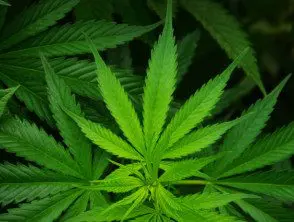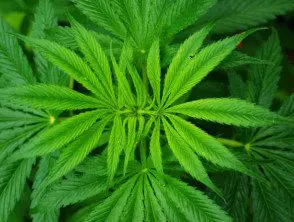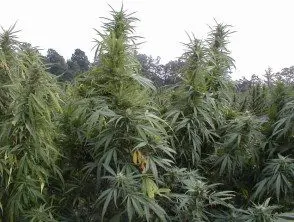What is cannabis?
Cannabis refers to one of the two notable subspecies of the cannabis plant.
- Cannabis sativa, also known as marijuana, has psychoactive properties.
- Cannabis sativa L., also known as hemp, is the non-psychoactive form of cannabis used in the manufacture of products such as oil, clothing and fuel. (The L was included in the name in honor of the botanist Carl Linnaeus).
Cannabis is also known as pot, herb, hashish, drug, ganja, joint, stick, yarndi, cone, mull, 420, dabs, dabbing, BHO, chronic, choof and reflect [1,2].
Cannabis comes in various forms. [one].
- Marijuana: the dried leaves and flowers of the plant.
- Hashish: the resin of the dried plant, usually mixed with tobacco and smoked or added to food and baked; THC levels are higher than in marijuana.
- Hashish oil: a thick golden brown to black liquid extracted from hashish and added to the tip of a joint or cigarette and smoked; Hashish oil is used sparingly due to its high potency.
- Concentrates: Extracts (touches, wax, or powder) generally use butane hash oil as a solvent and are vaporized in small amounts due to the high content of tetrahydrocannabinol (THC).
Cannabis sativa

A cannabis leaf.

Cannabis sativa plant

US Government Medical Marijuana Growing
What are cannabinoids?
Cannabinoid refers to any chemical that binds to cannabinoid receptors in the body and produces effects similar to C. sativa. Cannabinoids can be taken orally or applied topically. There are three types of cannabinoids. [1.3].
- Cannabinoids derived from plants (phytocannabinoids), such as THC, which is found exclusively in cannabis plants.
- Endogenous cannabinoids (endocannabinoids), such as palmitoylethanolamide (PEA), anandamide (AEA), and oleoyl ethanolamide (OEA), which occur naturally in the human body.
- Synthetic cannabinoids, which are produced in a laboratory. Synthetic cannabinoids are pure agonists with high affinity for CB1 receiver, which contributes to its psychoactive effects.
What are the effects of cannabinoids on the body?
Cannabis can be smoked, eaten, or vaporized to induce a temporary state of euphoria and a sense of relaxation. [one]. The psychoactive properties of cannabis are mainly due to THC; THC concentration is commonly used as a measure of the potency of cannabis.
Endogenous and exogenous Cannabinoids activate CB1 and CB2 cannabinoid receptors [2–4].
- The CB1 receiver is expressed in the PBX and peripheral nervous systems, including vascular endothelium, liver and adipose tissue.
- The CB2 receptor is found mainly in non-neuronal tissues and in immune cells all over the body
Activation of the CB1 receptor results in:
- Improved release of presynaptic dopamine in the dopaminergic mesolimbic system, which mediates the positive booster and reward effects of almost all drugs of abuse. [2.3]
- Reduced axon reflex-flare response, scratch reflex and vasodilation on the skin [5]
- Inhibition metabolizing anandamide enzyme [fatty acid amide hydrolase (FAAH)]. The FAAH enzyme breaks down AEA into ethanolamine and arachidonic acid. Inhibiting AEA metabolism results in elevated levels of endogenous AEA, which is therapeutic [5,6].
What are they current cannabinoids?
Topical cannabinoids are creams, patches, and gels that contain plant-derived, endogenous, or synthetic cannabinoids intended for therapeutic use. [7].
- Topical cannabinoids bind to cannabinoid receptors on sensory nerve fibers, inflammatory cells and attached structures within the skin.
- This union reduces pruritus, attenuates pain, average cellular response to ultraviolet B irradiation, inhibits epidermal keratinocytes proliferationand promotes apoptotic death of keratinocytes [5,8,9].
- Binding of cannabinoid receptors also promotes anti-inflammatory keratinocyte-related effects cytokine production and modulation of immune cells [8].
In dermatologyTopical cannabinoids are being investigated for the treatment of pruritus, inflammatory disorders, and skin. Cancer [5,10].
Topical cannabinoids in itching.
Experimentally, creams containing PEA and synthetic cannabinoids have been shown to be effective and well tolerated in treating itching associated with atopic dermatitislichen simplex nodular prurigoand uremia [3,6,11].
Topical cannabinoids in inflammatory skin disorders.
Cannabinoids have immunosuppressive, anti-inflammatory and other properties that may be useful in the treatment of inflammatory skin diseases, such as various forms of dermatitis, psoriasis, follicular disorders and scleroderma [3,5,10,11].
Cannabinoids and skin cancer.
UVA and UVB can be activated inflammation through the endocannabinoid system, potentially speeding up the initial stages of oncogenic transformation [6]. Cannabinoids can also promote oncogenic viral transformation as a result of their immunosuppressive properties. [5.10]. In animal models, by contrast, cannabinoids have been found to have anti-tumor effects mediated by CB1R and especially by CB2R. These anti-tumor effects are expressed in melanoma and keratinocyte cancer, resulting in the following [3,5,9]:
- Inhibition of tumor cell growth, reducing the progression of melanoma and metastasis
- Induction apoptosis in tumors but not normal melanocytes
- Inhibition of the proliferation and migration of tumor cells.
- Inhibition of angiogenesis.
Other therapeutic uses for cannabinoids
Oral cannabinoids have been used in the treatment of cancer-related side effects, such as chemotherapy- induced nausea and vomiting, pain and poor appetite. Cannabis extracts have shown the following benefits for multiple sclerosis:
- Reduce spasticity
- Reduces the frequency of spasms
- Particularly effective for neuropathic pain
- Particularly effective for non-neuropathic pain in multiple sclerosis.
Cannabis extracts have also been shown to be beneficial in the treatment of chronic pain. [4,8,12].
Other possible positive effects of cannabinoids include reducing the following:
- Tics due to Tourette syndrome
- Levodopa-induced dyskinesia in patients with Parkinson's disease
- Anorexia and weight loss associated with the human immunodeficiency virus (HIV) infection or acquired immunodeficiency syndrome (AIDS).
More studies are required to explore the potential benefits of medicinal cannabis for treating the following conditions. [4,8,12]:
- Irritable bowel syndrome
- Epilepsy
- Huntington's disease
- Dementia
- Glaucoma
- Traumatic brain damage
- Addiction
- Anxiety
- Depression
- Sleep disorder
- Post traumatic stress disorder
- Schizophrenia and other psychoses.
What are the adverse effects of cannabinoids?
The possible side effects and safety of topical cannabinoids have not been well elucidated. Some of the systemic The effects of oral cannabinoids are listed below. [4,12,13]:
| Neurological | Memory impairment, tremors, seizures. |
|
Psychiatric/ / mood |
Anxiety, confusion, agitation, mood. deregulation, paranoia, psychosis (short and long term), suicidal ideation, perceptual disorders |
| Cardiac/ respiratory |
Diaphoresis, chest pain, acute myocardium heart attack, hypertension, tachycardia |
| Gastrointestinal | Cannabinoid hyperemesis syndrome: abdominal pain, nausea and vomiting; symptoms can be alleviated with a warm shower |
| Dermatological/ rheumatological |
Cannabinoids sensitization or allergy; cannabis arteritis: severe vascular disease, leading to limb loss (see Thromboangiitis obliterans) |

